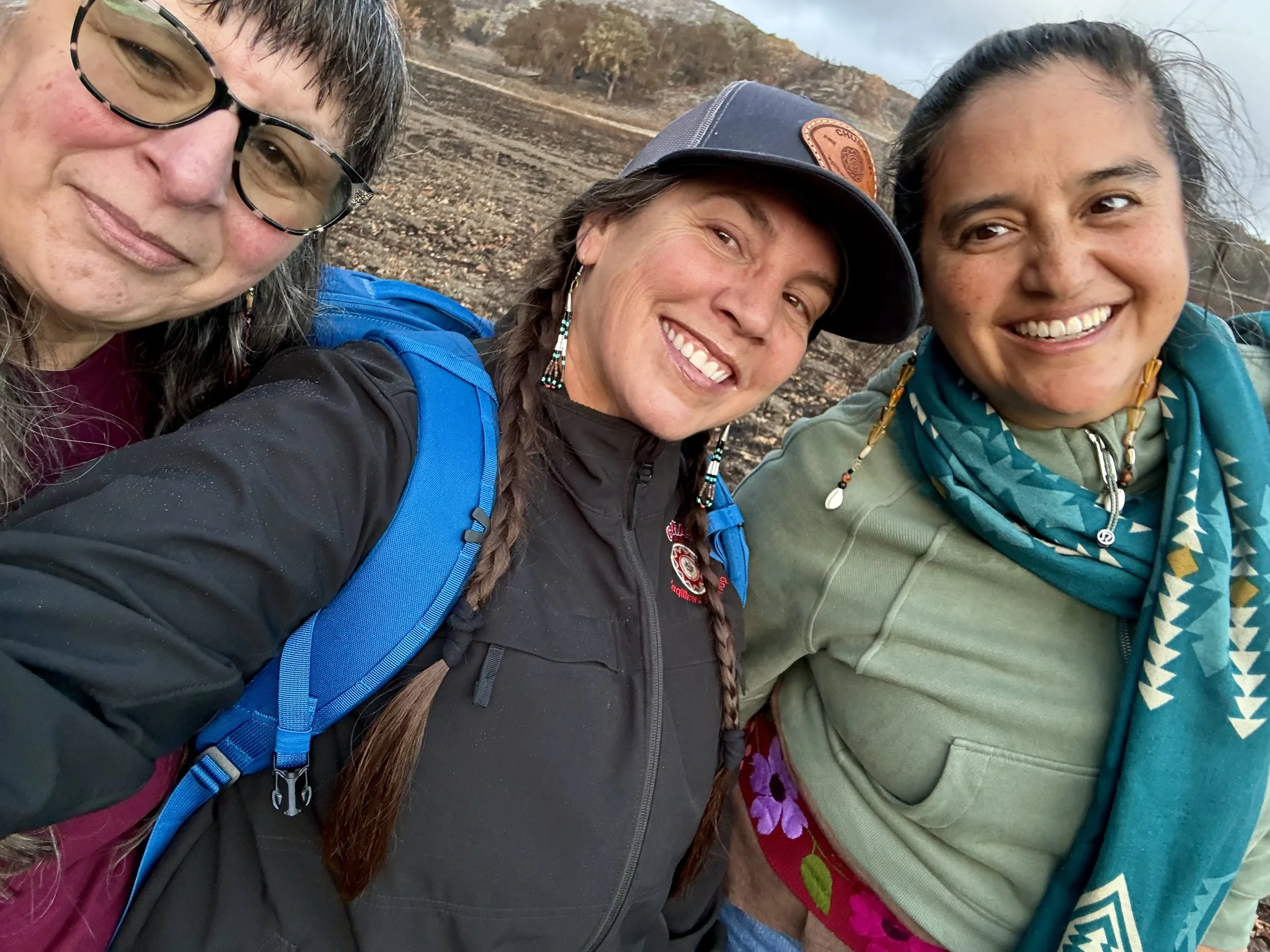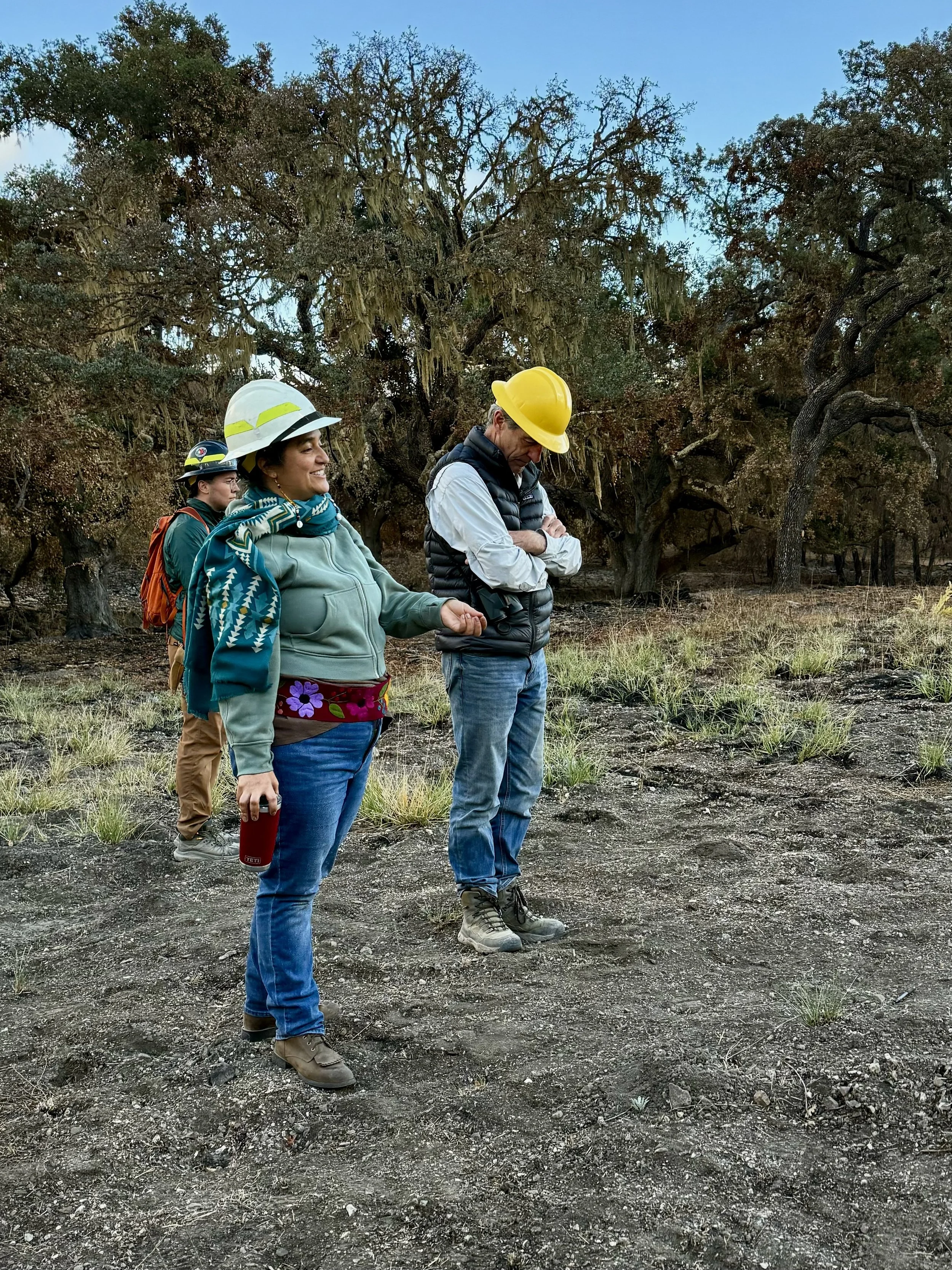Santa Barbara Prescribed Fire Training Exchange
Teresa Romero (Coastal Band) and Carlie Domingues (Chumash) are major contributors of the annual Santa Barbara Prescribed Fire Training Exchange (SBTREX), holding a special presentation on cultural awareness for participants. SBTREX brings together fire professionals, tribal partners, land managers, and community members to practice and learn prescribed fire techniques. Supported by PERFACT—a partnership between The Nature Conservancy (TNC), the USDA Forest Service, and the Department of the Interior—SBTREX builds local capacity for ecological and cultural burning in Santa Barbara County. Participants receive hands-on training at sites like the UC Sedgwick Reserve and TNC’s Dangermond Preserve, guided by expert fire crews. The event integrates research and Indigenous knowledge, with studies by NASA’s FireSense Program, UCSB, and Cal Poly, and offers stipends to support Indigenous participants.
Teresa has spent years developing partnerships with the Community Environmental Council, LegacyWorks, and Santa Barbara Foundation to create the Chumash Good Fire Project. This program blends Indigenous knowledge with western fire science, and has produced a guide based on interviews with fire experts, tribal members, ecologists, and policymakers to inform safe and culturally-rooted burning.
The program is part of a growing network that brings together groups like the Indigenous Peoples Burning Network and Tribal EcoRestoration Alliance, tapping into intertribal knowledge-sharing. Fire stewards complete both Indigenous and western training, including coursework, gear certification, and TREX (prescribed fire training exchanges).
Prescribed burning and cultural burning, while both involve controlled use of fire, differ significantly in their purpose, execution, and outcomes. Prescribed burning is a modern technique used by land managers to reduce fuel loads and wildfire risk, often prioritizing acreage and fuel reduction. Cultural burning, practiced by Indigenous communities, is a traditional method of land management focused on cultural, ecological, and spiritual needs, such as fostering food sources, medicinal plants, and basketry materials.







